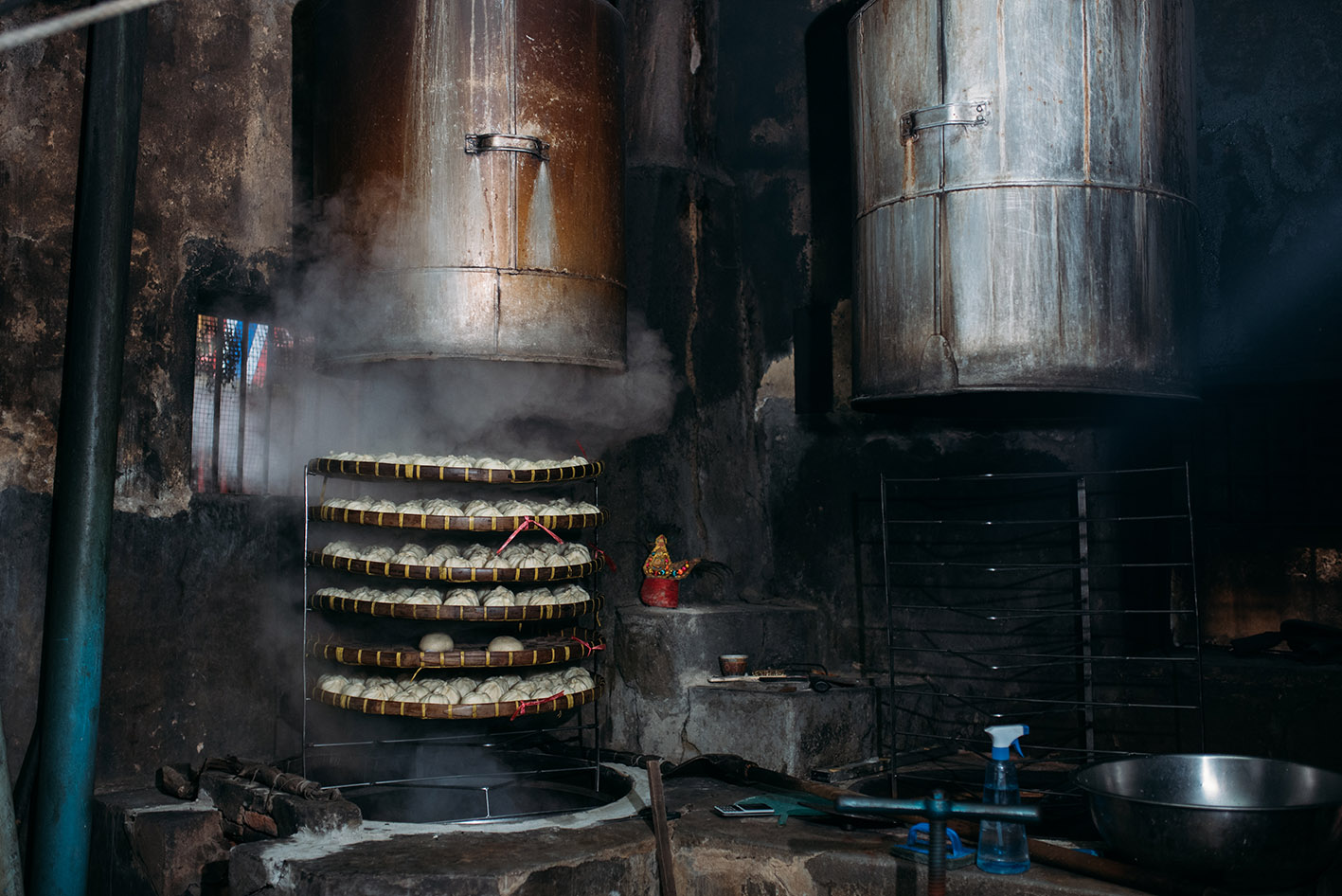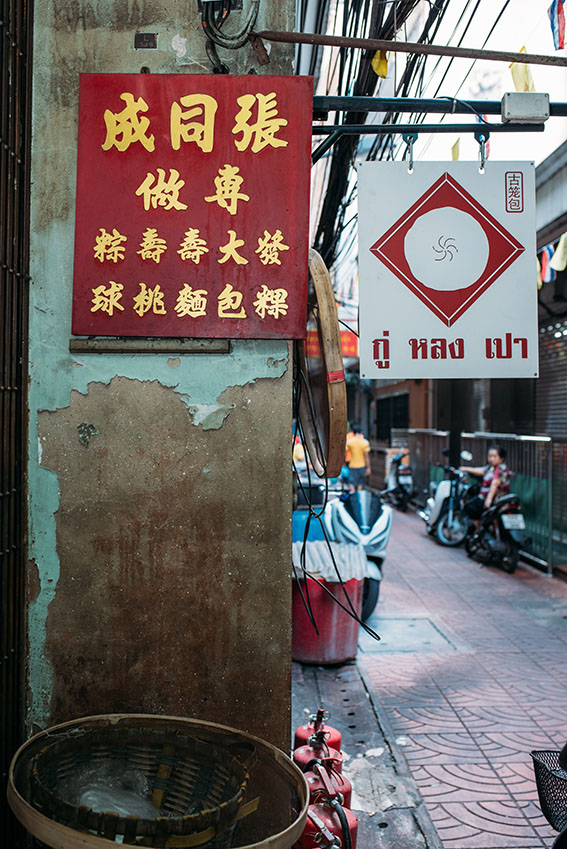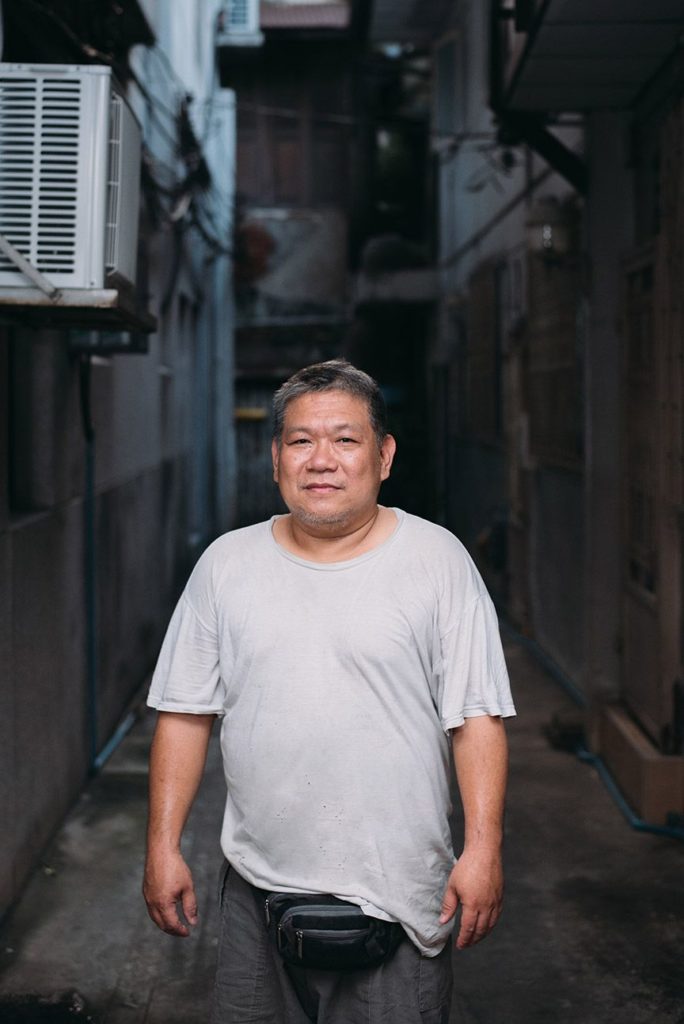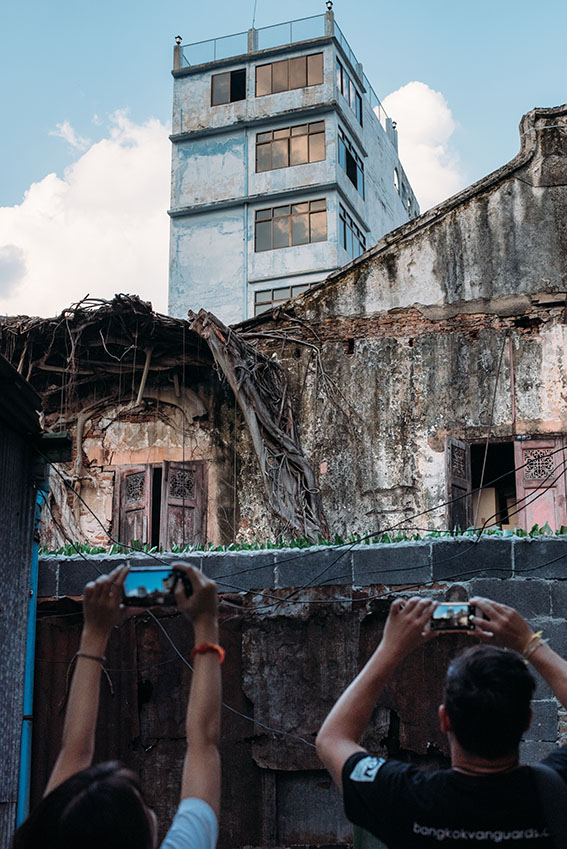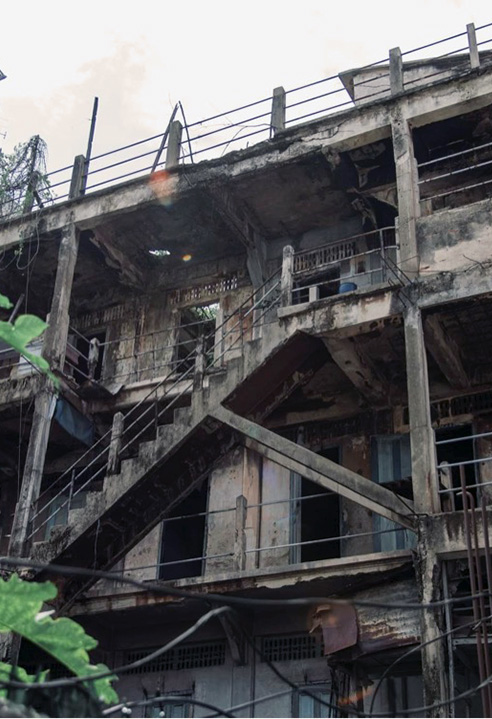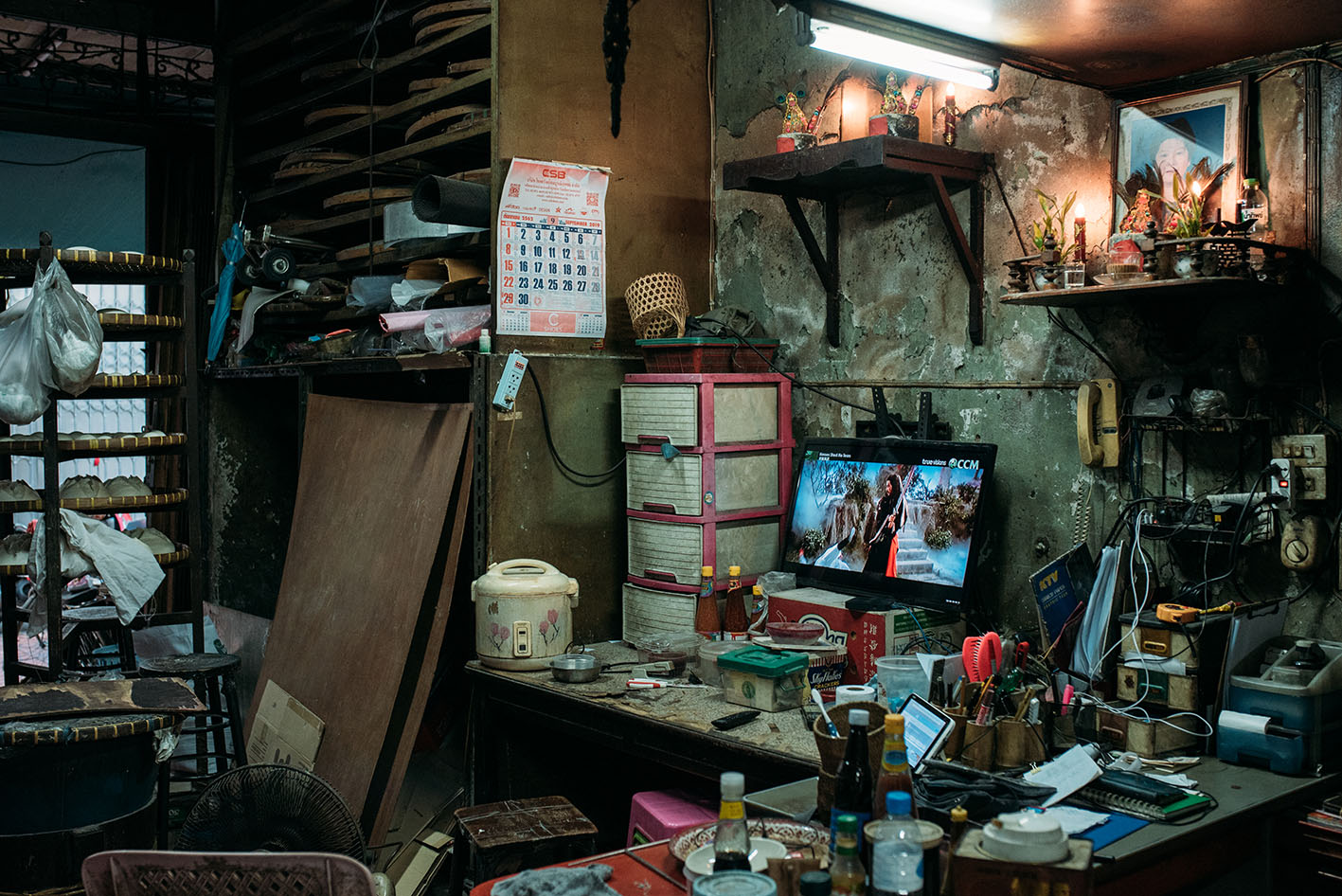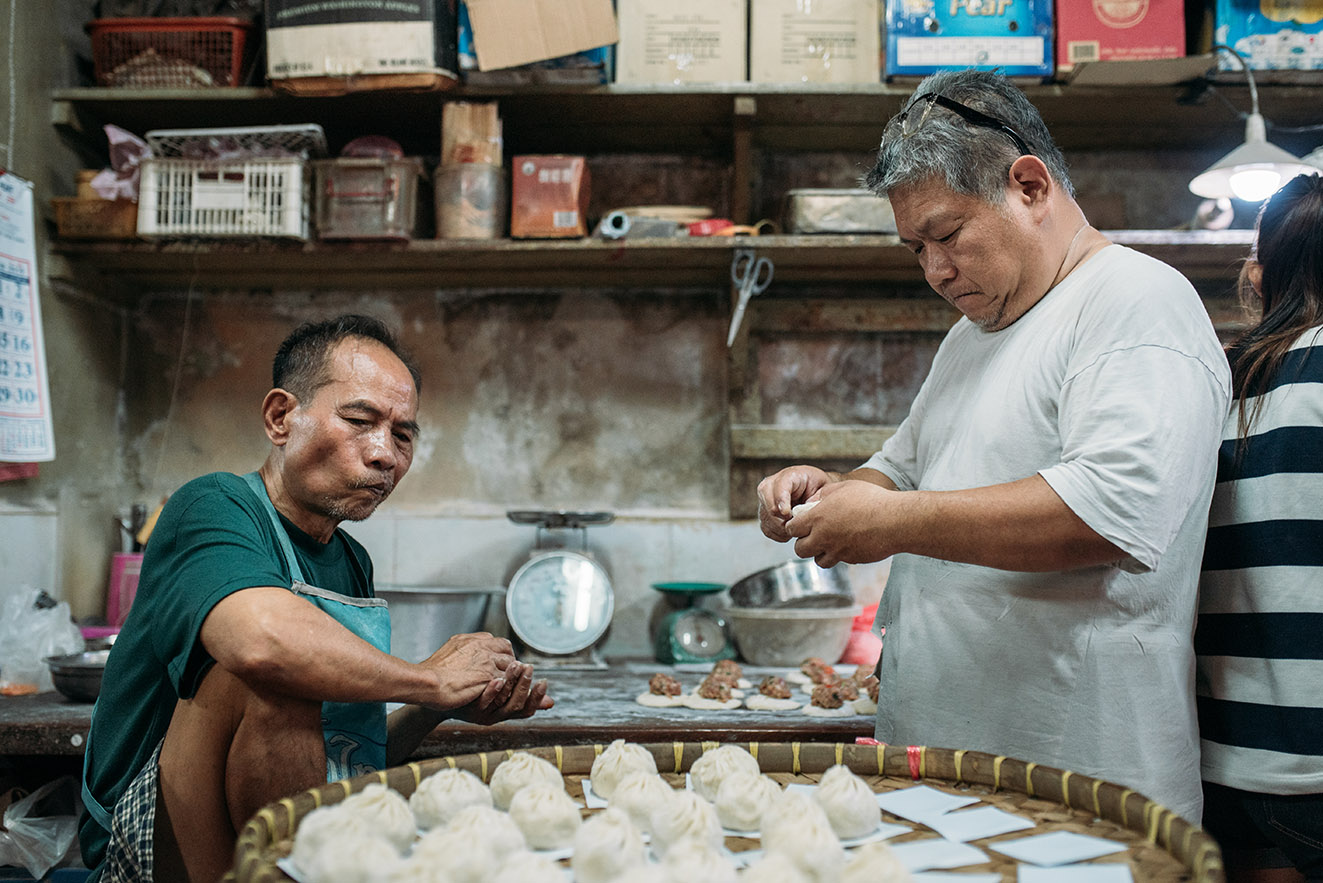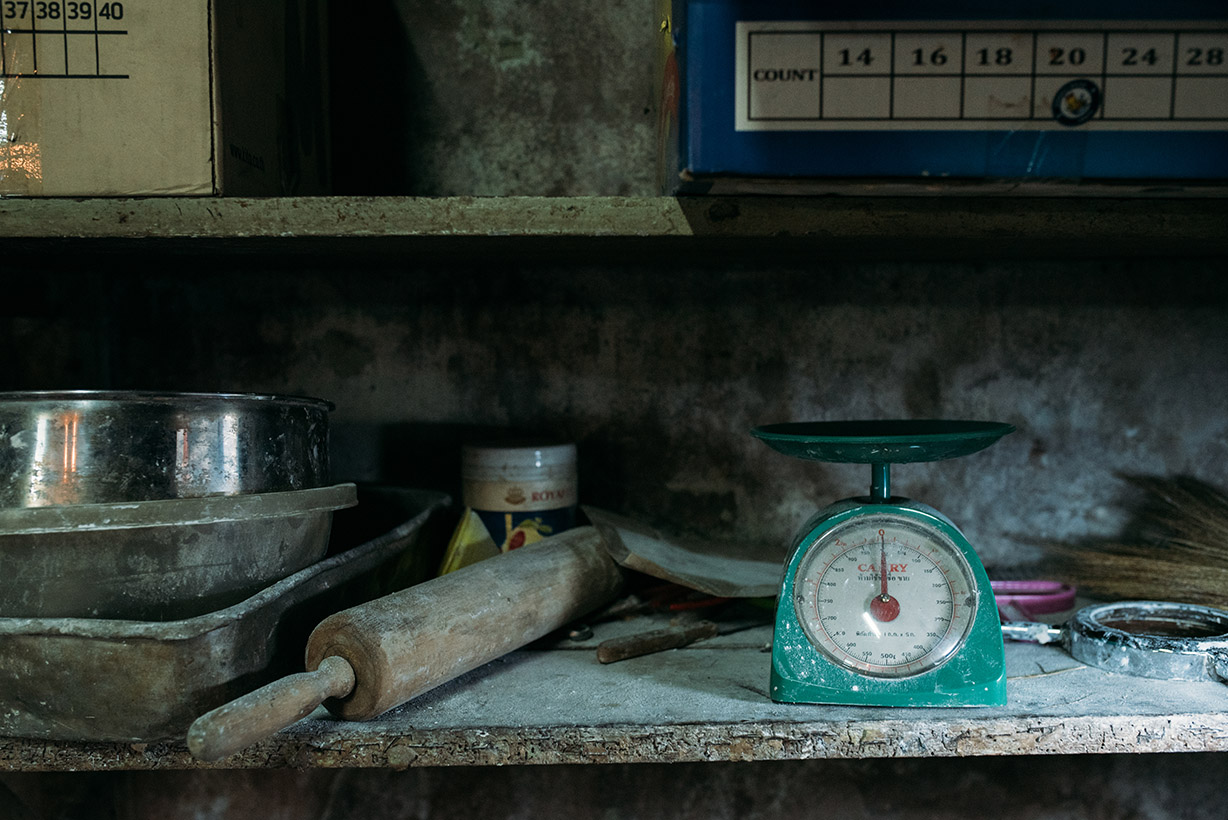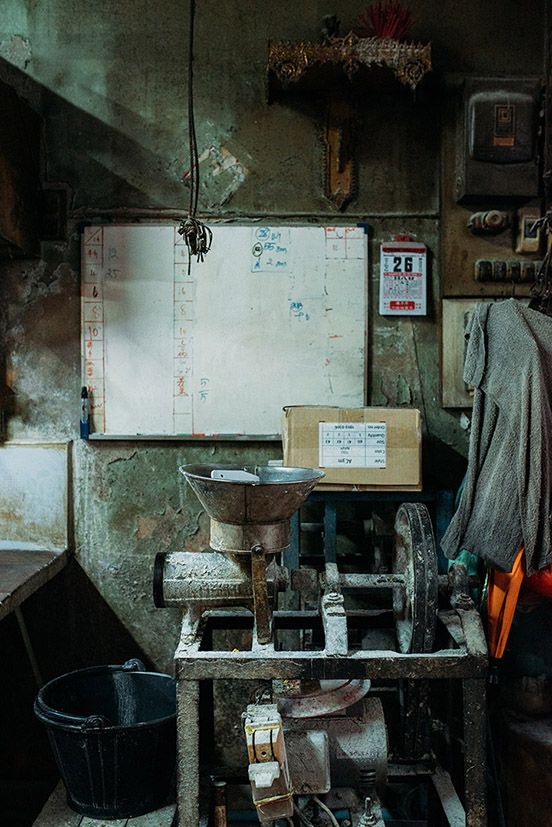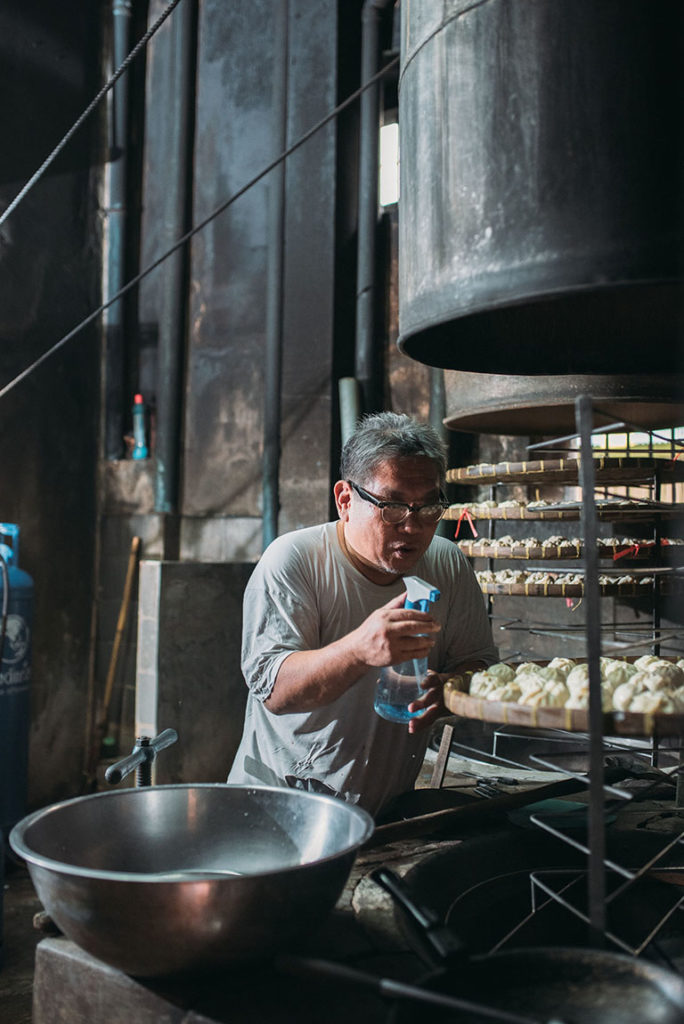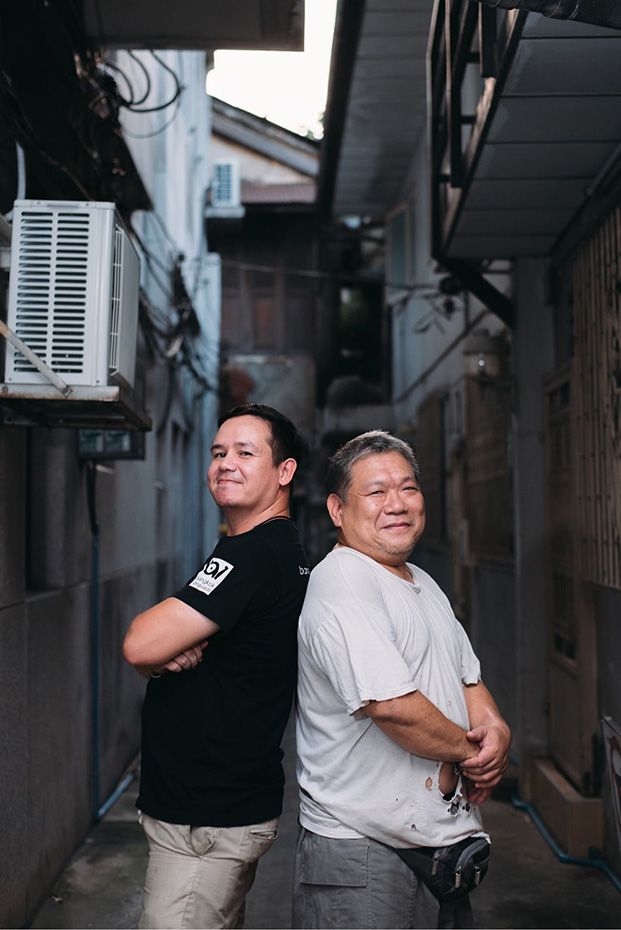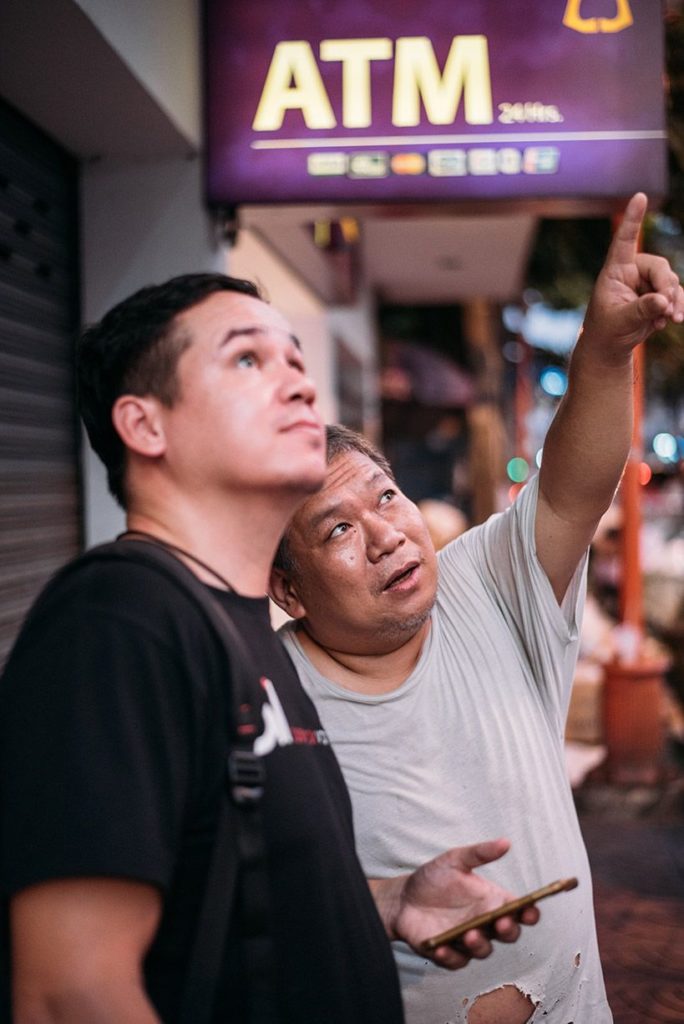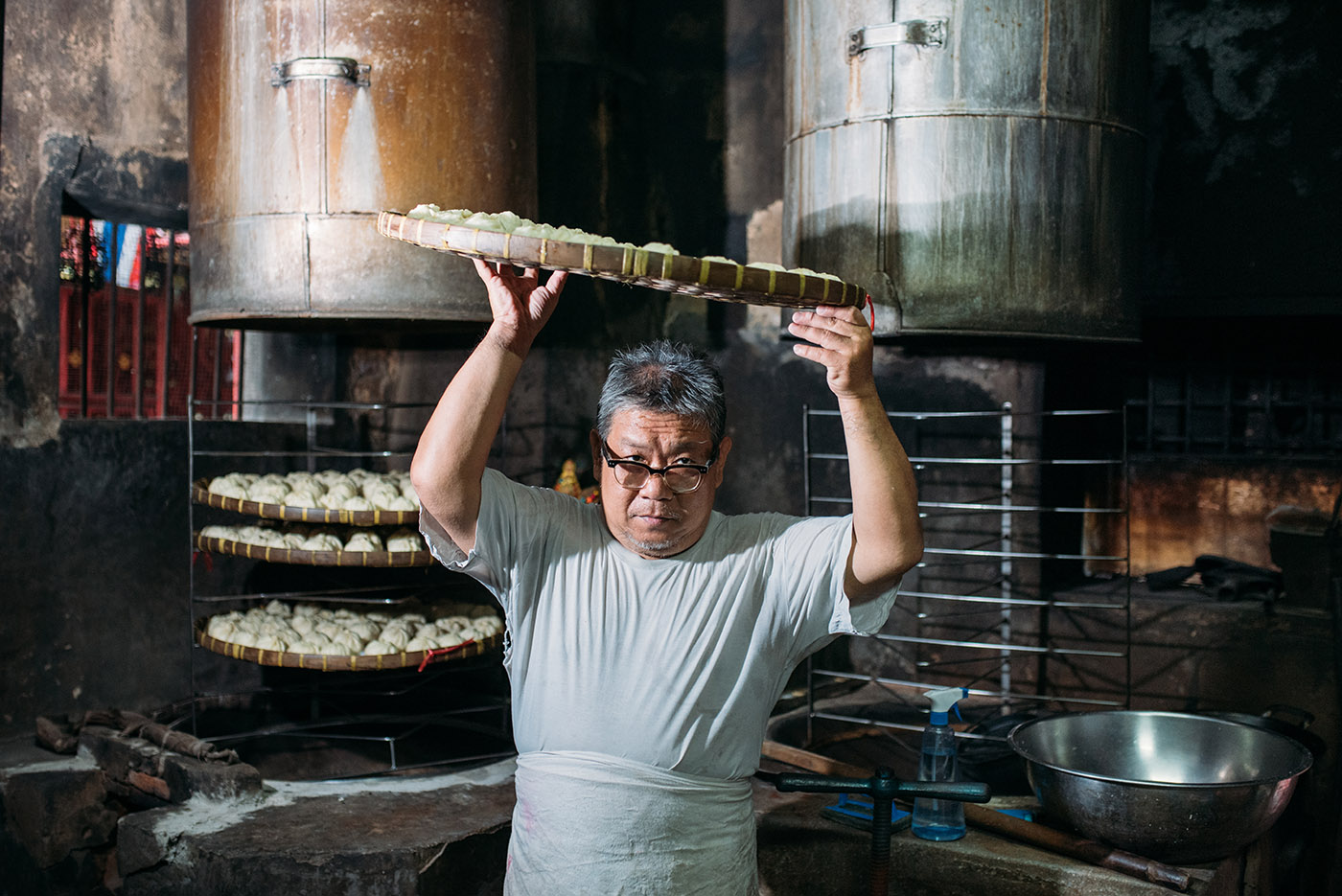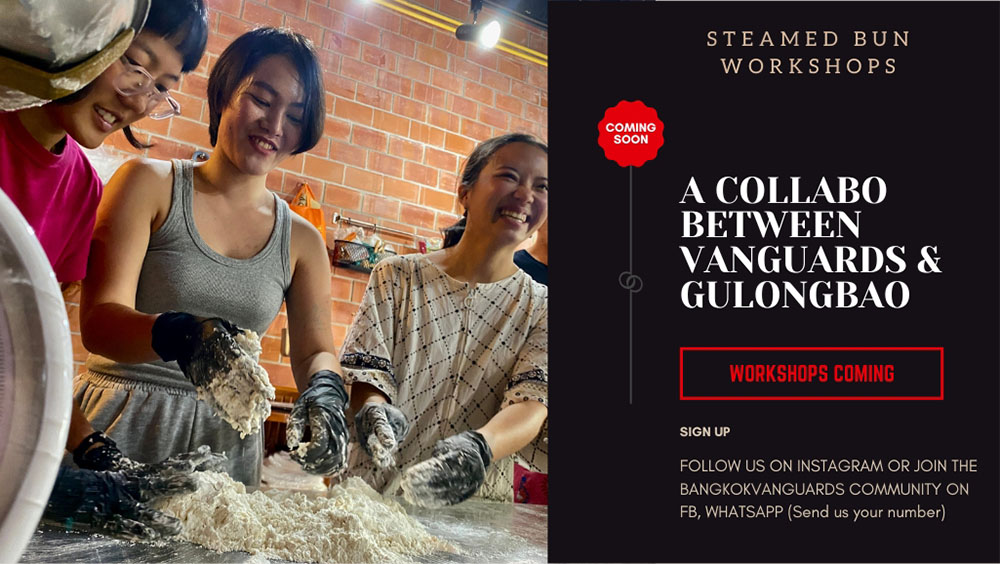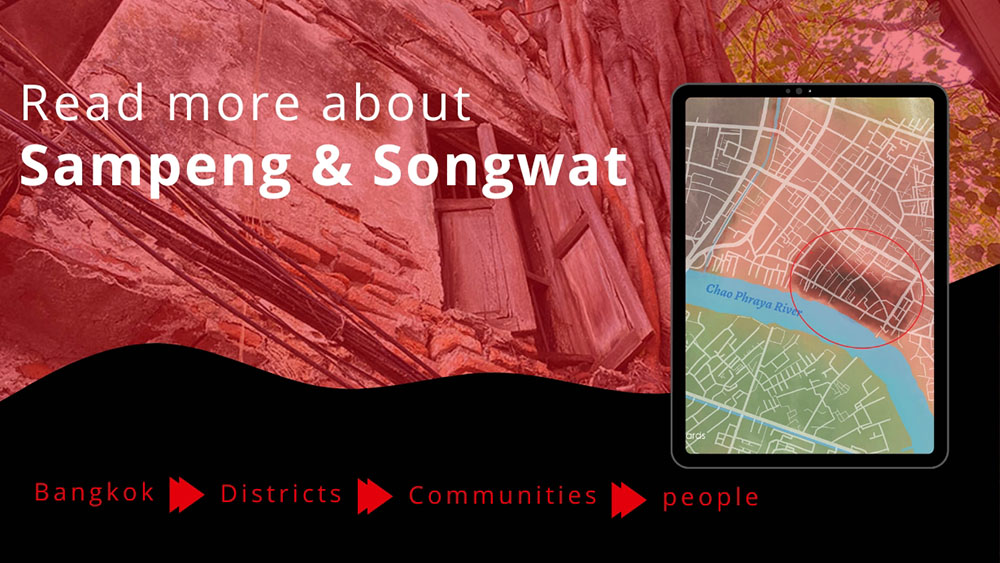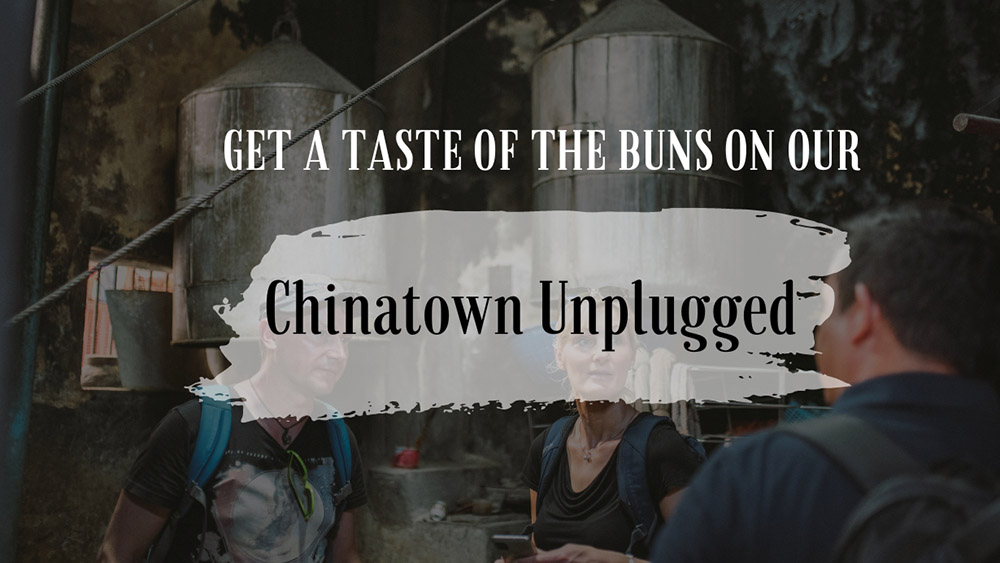Food as heritage
KHUN WICHIEN – THE STEAMED BUN OVERLORD
The story of one of Bangkok's last Chinese steamed bun makers
Much of the discourse around heritage conservation is centered on the architectural heritage of Bangkok, which is indeed important but I’d like to argue that food is likewise an important part of our heritage. It’s more noticeable when old buildings or entire neighborhoods disappear due to development, the disappearance of crafts, professions and small family run businesses happens far more under the radar. Singapore is the epitome of development but it has recognized street food as part of its heritage, Thailand still has a long way to go to recognize the ‘ordinary’ or ‘local’ history of the city. The story of Pee Wichien is a story of not just food but the social-, cultural and economic fabric of Bangkok’s old town areas.
As an aging society Thailand will face the same fate that Japan in that much of the wisdom, knowledge and skills including old family recipes won’t be passed on to the next generation and thus be lost forever. It is sad a loss for Thailand and a heavy blow to Thailand’s tourism in the future. One of traditional family run businesses that I was afraid would would vanish is the one I’m introducing here and it’s my favorite Chinese steamed bun maker in Bangkok. Follow me into the tasty heritage and history of Chinatown’s Sampeng / Songwat neighborhood through the eyes K. Wichien, a fourth-generation Chinese steamed bun maker and one of the last in Bangkok’s Chinatown.
The century old steam oven of K. Wichien’s great grandfather. Still in use, still producing some of the best steamed buns.
Thinking of Bangkok’s Chinatown, what comes to mind is street food, the neon glow of Yaowarat Road and the nightmare of finding parking space. However, if you dig a little deeper, you’ll find one of the city’s most complex, diverse and fascinating neighborhoods, boasting everything from markets, elaborately decorated Taoist temples, mysterious back alleys, trendy cafes and a deep culinary history.
Despite Chinatown’s culinary reputation, if you listen to the opinions of older residents, the past decades saw Chinatown move from the top of Bangkok’s culinary ladder, boasting the city’s best restaurants that catered to the city’s merchant elite down to street food catering to tourists. But not all hope is lost for Chinatown’s culinary heritage as some gems of the old guard are still around. Some are still thriving along the area’s main roads, others are hidden in the back-lanes. One such gem is Pee Wichien’s Chinese steamed buns workshop called Gulongbao (Pee here means older brother).
Bamboo instead of steel. Traditional materials still being used to produce authentic steamed buns. Especially with steamed food, bamboo is the preferred material in Thailand.
There are many things to be discovered in the alleys of Chinatown. From quaint buildings and warehouses, kitchens and elaborately decorated Taoist shrines. Here, the passion for craftsmanship extends into the old kitchens of Sampeng’s back alleys which includes making the perfect steamed bun. More than 15 years ago I stumbled into an open-front workshop and was struck by the lumps of dough, the white flour and bamboo trays, the flagrance in the air and the friendliness of Pee Wichien, the master bun maker in charge of this small delicious production facility. A childhood image of a classic German baker came to my mind but instead of an oven you’d find an ancient steamer used to make one of China’s most iconic foods. I learnt to appreciate his craft, not only because of the taste of his pork filled steamed buns but because we had a chance to experience what food tasted like and how it was made more than a century ago.
Shop sign of Gu Long Pao, taking orders for special occasions such as religious ceremonies, birthdays or weddings.
Pee Wichien. 4th generation steamed bun maker
The work is done and the sun is setting. Pee Wichien’s workshop is tugged away in one of the many laneways connecting the riverfront along Songwat Road with the interior of Chinatown and thus sits at the heart of the world’s most fascinating Chinatown. Pee Wichien takes me on a walk along Songwat which is a 1.2km long road running along the river and the country’s first real center for the export and import of agricultural products. It was once lined with countless companies, piers and docks that made up Thailand’s primary port until the end of World War 2. Some of the old companies and many of the old buildings are still standing and this neighborhoods is great for shutterbugs and history buffs. Pee Wichien talks about his family, his neighbors and his upbringing. As the evening light, the alleys and the timeless, pastel colored facades of buildings dip the area into a form of urban serenity that makes the history of Songwat palpable.
“My great grandfather founded this steamed bun business. He immigrated from China during a time when there were lots of Teochew Chinese coming to Thailand. He was a Teochew Chinese as well. Did you know that King Taksin was a Teochew Chinese?” He asked with a laugh. “But that was long before my great grandfather’s time. My grandfather told me that when the Chinese arrived, their junks were color-coded. A red Chinese junks meant it was boat of the Teochew Chinese, while green meant Hokkien Chinese. Both groups were some sort of rivals. They came poor and settled anywhere, even in places where nobody wanted to live.” We turn into a dead end and Pee Wichien points over the wall. A dilapidated building with crumbling external staircases stands like a morbid testimony of Chinatown’s early social housing. Next to it sits a ruined house of a wealthy merchant. “I consider these flats as part of our heritage because the flat exemplifies the living conditions of early Chinese migrants. The lives of Chinese varied greatly; some were well off and some were downtrodden, others were involved in illegal things such as gambling and selling contraband.”
Some were well off, most were down-trodden. Old flat buildings from the early 20th century to house Chinese migrants who came in large numbers and manned the docks, factories of Thailand’s old port districts. Such ruins can be found away from the main roads and are the testimony of Bangkok’s working class a century ago. Most of these buildings however have been knocked down in the 1980’s and 1990’s due to their depilated state.
“When I was seven our community was a slum. My house is more than 100 years old. There were so many people living in our house and in the community. I was born here and I still live right above our shop. Many of the Chinese immigrants lived together in buildings owned by the Crown Property Bureau. The first flat of the area had 90 rooms and everyone had to share the bathroom. It was Chinatown’s first flat built from concrete but it was knocked down in 1996 because it was run down. You could find drugs and prostitutes. On my way to school I saw people taking heroin. First, there weren’t injecting but smoking it in a cigarette. Heroine is very dangerous but laws were not strict. It was easy to get robbed. Fortunately, my grandmother was very pious and observed many religious precepts. She prayed, she was vegan and taught everyone to be compassionate and that kept everyone in the family away from the drugs. Our shop was operating 24/7. We made Salapao duding the night time and Ba-Jang during the day time. Eventually we stopped making Ba-Jang because of the tedious process of picking, cleaning and boiling bamboo leaves for the wrapping.” Pee Wichien points to his palm and fingers and tells me that his mother didn’t have fingerprints after many years of cleaning those bamboo leaves. He points to the back of his workshop. “We had 7 workers but now there are only 2 workers left. It has become quiet here.”
Pee Wichien stops for a brief moment, contemplates. “The living conditions have improved but the downside is that there is not as much solidarity and social cohesion as in the past when everyone in the community treated each other as family. But as time went on, people passed away or moved away. People from Sampeng bought buildings in this community and turned them into warehouses. Also, workers from the Isarn (northeastern region of Thailand) moved into this community to make a living in Sampeng. Initially there was friction but now we all get along and there aren’t any problems anymore. There is even a woman from Isarn who has been here for so long that she can speak Chinese.”
Pee Wichien’s Operations HQ.
“Besides making steamed buns I’m also the caretaker of an ancient shrine at the back of my house. The shrine is over a century old and dedicated to Sia I-ung Kong. You can find the Sia I-ung Kong Chinese Shrines in Bangkok, Suphan Buri, and Samut Sakhon but this one was the first of its kind. Sia I-ung Kong rules and protects everyone. He is acts as a judge and his bodyguards arrest bad spirits. We dedicate four festivals per year to the deities and just like the steamed buns I would love to preserve our heritage.”
Pee Wichien seems to be a man of little worry and never appears to be stressed out. He is content with his life and his mellow approach to life is nurtured by the freedom his job brings. He explains “Seven Eleven asked us to produce steamed buns for them but I refused. Sometimes I get a little tired of my work because I have been doing this work for so long but on the other hand I feel free because I’m flexible with my work time, I only accept orders that I can handle and I don’t have anyone bossing me around. I have never worked in another profession but I can imagine to be a grocery shop owner when I’m old. I usually work alone but I’ve got a good old pal who helps me out. He’s been helping our business since he was twelve but he’s sixty now and he is in poor health and can’t do much.”
Khun Wichien and his pal have been working together since childhood.
From the legends of the Three Kingdom’s era to the work tables and tools of Sampeng’s steamed bun makers.
Steamed buns have come a long way since they were invented roughly 2,000 years ago. Opinions about the origins of Baoze diverge. Some date Baoze back to the Three Kingdom’s period (220 – 280A.D.) and other historians go even further back to 400BC. In either case, Baoze which translates as little bag has a fascinating origin story in which a famous Chinese general by the name of Zhuge Liang went on a campaign in southern China and lead his army to a river where he was met by a barbarian lord who told him he could only cross the river safely if he sacrificed his men and threw their heads into the river. Liang outsmarted the request and tossed head-shaped and meat filled buns into the river instead. Once they crossed the river to safety he named these buns mantou or barbarian heads and brought the dish to northern China where they evolved to become the modern version of today’s Baoze. From here, through Chinese migration over the Millenia, Chinese buns of various kinds made their way into Southeast Asia and into the laneways of Bangkok’s Chinatown.
Pee Wichien takes pride not only in his community but also his profession. “I work for our local Chinese communal shrine, hence I have to preserve the traditional way of making Salapao. I love the traditional style and I have never experimented with new types of steamed buns. Many places adapt the taste and styles but I want to continue it the same way my parents, grandparents and great grandfather did. Steamed buns are a classic and iconic Chinese staple Pee Wichien explains. ” I make Teochew style steamed buns. They’re different from the way people in Hong Kong make them. The Cantonese like their steamed buns filled with BBQ pork, red bean and custard. They have a fluffy texture while our Teochew version is gummier as we add sweet potato to give them a softer texture.”
“I have never been to China but I was told that Salapao (Thais refer to steamed buns as salapao) in China taste different. The Chinese who migrated to Thailand found it hard to find the same ingredients they had back home. Thai garlic and spring onions are smaller and they smell and taste more pungent than Chinese onions or garlic, also the soy sauce tastes different. The ingredients are actually very simple, some spices, soy sauce, sugar, pepper, fried garlic, spring onions and salt are mixed with the minced pork and used as the filling. I buy the pork from Talad Kao where some of the shops open as early as 2:00a.m. Talad Kao is Chinatown’s oldest market. The butcher there knew my parents and grand parents. They have been around for a long time and we can count on their quality. Also, flour is important. Sellers will ask Salapao makers about the flour. We use different types of wheat flour. Teochew Chinese back in the days didn’t like the soft, fluffy, white steamed buns as the dough gets mushy from the savory and juicy fillings. They prefer steamed buns with a stickier texture, so we mix soft and sticky flour to get a good balance. It takes about 5-6 hours to make steamed buns. You start by mixing the flour, preparing and kneading the dough. Then I mix the pork and the ingredients, stuff it into the salapao and steam it. and you can keep them for 2-3 days in a fridge.
Pee Wichien’s workshop has been producing steamed buns not only to satisfy one’s appetite for buns but for religious offerings, birthdays and wedding gifts as well. Each occasion comes with a specific type of Bao or decorated Bao to keep the tradition. “My buns are sold to be used as offerings in temples or as birthday gifts. People from outside are interested in my products but it’s usually the older generation rather than the young generation that is interested in steamed buns for religious offerings.”
After learning so much about his steamed buns, I feel the craving to bite into one. When I’m there he’d let me grab some fresh buns straight from the bamboo trays when they’re still warm. There’s nothing more comforting to bite into. Pee Wichien’s favorite buns are the minced pork with salted egg filling and I agree. If you want to get a taste of his buns. Pee Wichien’s relatives have a small hole in the wall shop on Charoen Krung Road. See Map Below. Besides pork filling they also have vegetarian fillings such as yellow beans, black sesame and plant based pork.
My favorite steamed bun maker in the world
Understanding a place through the eyes of its people
As mentioned, Pee Wichien has the aura and cheerfulness of a Dalai Lama. Unlike many other multi-generational businesses Gulongbao has found a heir within the family. Nut, his nephew has quit his corporate job to help his uncle lead the steamed bun brand into the future and promote the family heritage. We’re here to support and are working on workshops so that you can make your own steamed buns in their second kitchen on Songwat Road. More on this in future blog posts. Follow us for more on Instagram.
Tracing my asian roots, telling stories and creating experiences around it.
